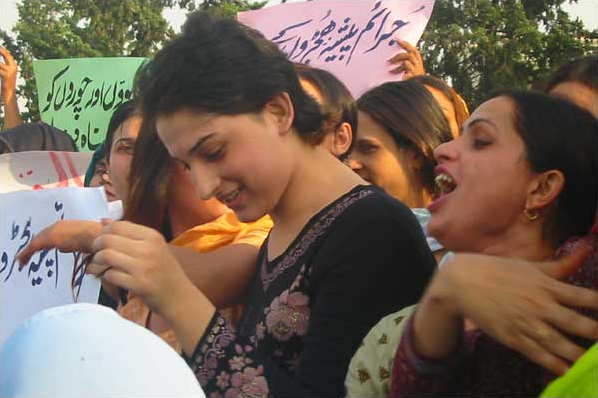In May 2018, the Pakistani parliament passed the Transgender Person (Protection of Rights) Act, enacting strong protections for transgender rights. Pakistani society, as well as South Asian society more broadly, contains individuals of a third gender called Khwaja Sirah, who are born with male anatomy but wear clothing generally thought of as female. To the west of Pakistan lies another Muslim-majority country with surprisingly strong protections for transgender people. Iran performs the second-most sex change operations of any country in the world, and its religious leaders have approved of protections for transgender rights in one form or another since 1986. Social progress is not quite as linear as some in the West would imagine. Gay rights do not necessarily develop before trans rights, and LGBT rights may develop within the confines of the dominant religion rather than in opposition to it.
Trans rights movements have been far more successful than gay rights movements in the Islamic world. Homosexuality is illegal in Pakistan, and male homosexuality is punishable by death in Iran. By contrast, the Pakistani government Council of Islamic Ideology has actually endorsed some transgender rights, with its leader citing the presence of a trans person in the Hadith. Additionally, in Iran, the religious leadership openly endorses the idea that a person’s gender identity might not align with their anatomy. In these two religiously conservative countries, transgender rights are actually developing before gay rights.
There are several key differences between transgender rights movements in the Islamic world and those in the West. In Pakistan, trans rights developed out of recognition of a preexisting social category, the Khwaja Sirah, which does not have a clear Western analogue. Already woven into the fabric of South Asian society are long-standing social roles for the Khwaja Sirah, such as begging and singing at weddings. Using this history as a basis for a potential recognition of trans rights, transgender activists in Pakistan were successfully able to push through the Transgender Person (Protection of Rights) Act. This wide-ranging act protects transgender people from discrimination by government and private employers, and it creates protection centers to protect transgender people from the threat of violence against them. Additionally, the new law codifies the rights of transgender people to collect their inheritance and run for public office. By passing this law, Pakistan’s parliament indicated that the country is ready for greater levels of participation by transgender individuals in public life.
Iran does not have a traditional third gender like the Khwaja Sirah. Because of this, the development of transgender rights is taking a very different historical trajectory from that of Pakistan. In Iran, pre-operation transgender people are recognized as ill rather than criminal, and so the government is willing to subsidize sex-change operations to “treat” them. As early as 1986, Ayatollah Khomeini affirmed that sex change operations and hormone replacement therapy are compatible with Islam.
This is not to say Iran is without its issues. Acceptance of trans rights in Iran is actually quite the double-edged sword. This is because of the practice of cisgender gay people being pressured into getting sex change operations by the government. Cisgender gay Iranians undergo this operation to “treat” an “illness” that they don’t actually have in order to avoid the harsh penalties for homosexuality, which is considered a sin by the theocratic regime regardless of whether or not the regime thinks that transgender individuals are compatible with Islam. As it turns out, the regime does think that the presence of transgender individuals is compatible with Islam, but only in a very specific way. Transgender individuals must conform to the gender binary and fulfill traditional gender roles. Kevin Schumacher, an LGBT rights activist with OutRight Action International, explains: “The Iranian government doesn’t recognize being trans as a category per se, rather they see trans individuals as people with psychosexual problems, and so provide them with a medical solution. If you’re born a man and your body is a female then in order to protect you and the wellbeing of society, the government is responsible for fixing the issue.” LGBT rights in Iran are developing narrowly through the lens of the regime’s fundamentalist Shia Islam, yet these rights are being guided by the regime rather than developing in opposition to it.
The stories of LGBT rights in Pakistan and Iran are quite different from the stories of similar movements in Western countries. The rulings of Pakistan’s Council of Islamic Ideology and Iran’s theocrats reveal that Islam itself is to a large extent tolerant of transgender individuals. Beyond that, the transgender movements in Pakistan and Iran differ from each other in important ways that are informed by historical and cultural context, as Pakistan has a historical third gender whereas Iran’s transgender movement is still constrained by a gender binary. Before rushing to judgment about non-Western countries, Westerners should remember that the West, Iran, and Pakistan are on different historical arcs. It remains to be seen if and how these arcs continue to bend towards justice.
Featured image source: Wikimedia Commons






Be First to Comment